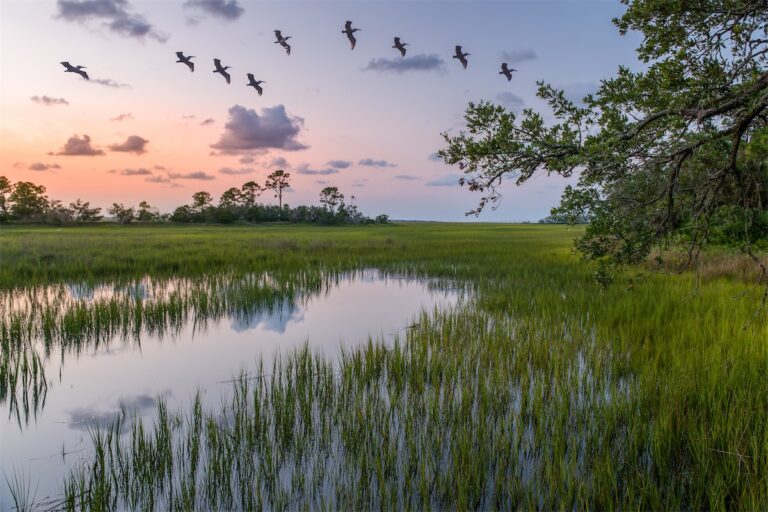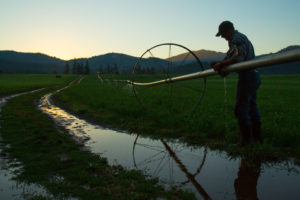The Hill: Federal agencies lay the groundwork to ignore the Supreme Court

In Weyerhaeuser v. U.S. Fish and Wildlife Service, the Supreme Court held that land designated by the U.S. Fish and Wildlife Service as “critical habitat” under the Endangered Species Act (ESA) must be habitable for the species the Service seeks to protect. But the Service recently jettisoned the rule defining “habitat” that it adopted to comply with Weyerhaeuser. In doing so, it undermined the Supreme Court’s holding in Weyerhaeuser, ignored the Constitution’s separation of powers, and reinstalled a regime of capricious habitat designations.
The ESA permits the Service to list species as endangered or threatened and to designate lands as “critical habitat” for species. A decade ago, the Service declared over 1,500 acres of the Poitevent family’s Louisiana property as critical habitat for the endangered dusky gopher frog. That designation would have restricted the family’s ability to use their land, potentially costing them millions of dollars in lost economic benefit.
But there was one problem: the frog had not been seen anywhere in Louisiana for over 50 years. And individual dusky gopher frogs could not have survived on the Poitevents’ land without significant modification. In other words, the Poitevents’ land was not a “habitat” for the frog. After years of litigation, the Supreme Court made it clear in Weyerhaeuser that, under the ESA’s plain meaning, any designation of critical habitat must first be “habitat” of the protected species. As the court explained, under the ordinary understanding of how the English language works, adjectives modify nouns, so designated property must be habitat before it can be critical habitat.
But the ESA does not define “habitat” and the Supreme Court left it up to the lower court or the Fish and Wildlife Service to define the term in line with the ESA’s text.
Before Weyerhaeuser, the agency — in what can be described only as a regime of regulatory adhocracy — never consistently defined what constitutes “habitat” under the ESA. Instead, relying on claimed “expertise” and a belief that the statute enacts a broad “conservation purpose” to exclude all other goals, it determined what private property it would designate in individual circumstances. In other words, the Service apparently made it up as it went along, effectively enacting a precautionary regulatory principle unmoored from the statute’s text. And Weyerhaeuser shows that this regime could lead to overbroad and unjustifiable habitat designations, potentially causing property owners severe economic harm.
After Weyerhaeuser, the Service went through a notice and comment rulemaking process to define “habitat.” Its rule cited Weyerhaeuser’s holding and sought to implement the statute as written by Congress. By defining the term, the Service also provided the regulated public with essential guidance on how it would implement the ESA and limited its own ability to engage in case-by-case determinations.
President Biden, as part of his broader policy agenda to use federal agencies to remake federal environmental law, directed the Fish and Wildlife Service to rescind the rule defining habitat and thus return to the pre-Weyerhaeuser ad hoc regime. So, the Service has abandoned the ESA’s text and announced an intent to return to a malleable “biologic” definition of habitat that it will define and redefine on a case-by-case basis. Only this approach, the Service claims, will conform with the statute’s broad “conservation” purposes.
Yet, in doing so, the Service disregards the Supreme Court’s direction to apply the statute as passed by Congress and instead seeks to self-aggrandize its authority at the expense of the rule of law. Sadly, executive agencies acting as roving lawmakers by relying on broad statutory purposes, rather than the text of a statute, is not isolated to critical habitat designations under the ESA.
Federal agencies long have relied on the Clean Water Act’s (CWA) general purpose of protecting the navigable waters of the United States from pollution to claim near limitless authority to act as federal land-use planners. Indeed, these agencies have asserted they can regulate everything from ditches to seasonal puddles as “navigable waters” because these non-waters might, under some circumstances, affect pollution levels in navigable waters.
The Supreme Court is set to address the Environmental Protection Agency’s (EPA) authority under the CWA next term in Sackett v. EPA. In 2007, the Sacketts sought to build a single-family home on a vacant lot in a built-out residential subdivision near Priest Lake, Idaho. But shortly after breaking ground, they became embroiled in a 15-year legal battle with the EPA over whether their property is navigable water subject to federal authority. In its brief to the Supreme Court in Sackett, the government repeatedly cites its interpretation of the CWA’s general purpose as a justification for asserting federal authority over private property that often — as is true with Sackett’s property — does not fall within any plausible definition of navigable waters.
The Supreme Court should hold that the EPA cannot regulate the Sacketts’ property. But, almost as importantly, it must provide a clear legal definition of what private property falls within the EPA’s authority under the statute. If the court does not give a definitive definition, it will provide the EPA with room to engage in the same linguistic mischief the Fish and Wildlife Service is using to circumvent Weyerhaeuser.
Constitution’s separation of powers requires federal agencies to implement the laws passed by Congress by following the laws’ text. When agencies can ignore this principle and redefine a statute’s meaning case-by-case, it enables executive jiggery-pokery. The Fish and Wildlife Service has returned to this regime under the ESA; the Supreme Court should prevent that from happening under the CWA in Sackett.
This op-ed was originally published in The Hill on July 18, 2022.







